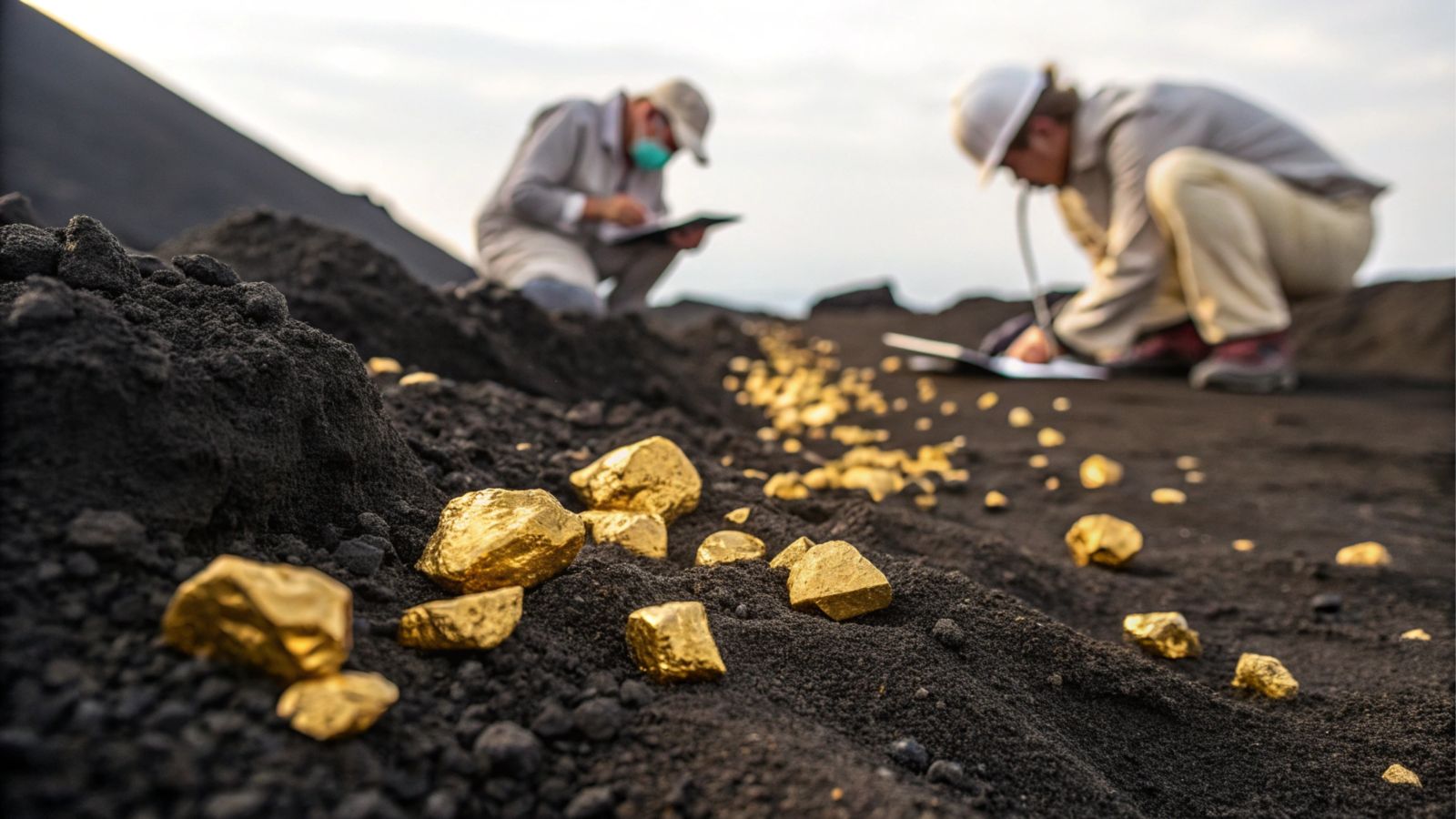Follow us on Google News (click on ☆)
A team of researchers analyzed volcanic rock samples in Hawaii, revealing the presence of ruthenium, a platinum-group metal. According to them, this metal comes directly from the boundary between the core and the mantle, located more than 1,800 miles (2,900 km) deep.

Unfortunately, it's not as simple as in this illustration...
The results of this study, published in Nature, suggest that materials from the core, including gold, migrate toward the upper mantle. This discovery challenges the idea that Earth's core is completely isolated from the rest of the planet.
Earth is composed of three main layers: the crust, the mantle, and the core. The core, divided into a liquid outer part and a solid inner part, contains most of the planet's precious metals. Researchers compared the isotopic composition of ruthenium in Hawaiian rocks with that of the mantle, confirming its deep origin.
This study opens new perspectives on the formation of oceanic islands like Hawaii. It indicates that enormous volumes of mantle materials, originating from the core-mantle boundary, rise to the surface. This process could be responsible for the richness in precious metals in certain regions.
This discovery has major implications for our understanding of Earth's dynamics. It shows that the core interacts with the mantle more than expected, influencing the planet's surface chemical composition.
How do precious metals migrate from the core to the surface?
Precious metals like gold and ruthenium can migrate from the core to the surface through geological processes. These metals are transported by mantle plumes, columns of hot rock that rise toward Earth's crust.
Mantle plumes are capable of traversing Earth's layers over thousands of miles. They carry core materials to the upper mantle, where they can be incorporated into volcanic rocks.
Once at the surface, these precious metals can be concentrated in certain regions through secondary geological processes. This explains why some areas, like Hawaii, show abnormally high concentrations of these metals.
This migration of precious metals is a slow process, taking millions of years. It is essential for understanding the distribution of mineral resources on Earth.
What is the significance of discovering ruthenium in Hawaiian rocks?
The discovery of deep-origin ruthenium in Hawaiian rocks is direct evidence of precious metals migrating from the core to the surface. This metal, rare on the surface, is a key marker for studying deep geological processes.
Ruthenium has specific isotopes that allow tracing its origin. Researchers used this characteristic to confirm that the metal found in Hawaii indeed comes from Earth's core.
This discovery has important implications for geochemistry. It provides a better understanding of material exchanges between Earth's different layers and their influence on surface composition.
Finally, this study opens new avenues for mineral exploration. By identifying regions where deep-origin precious metals are present, scientists could help locate new deposits.